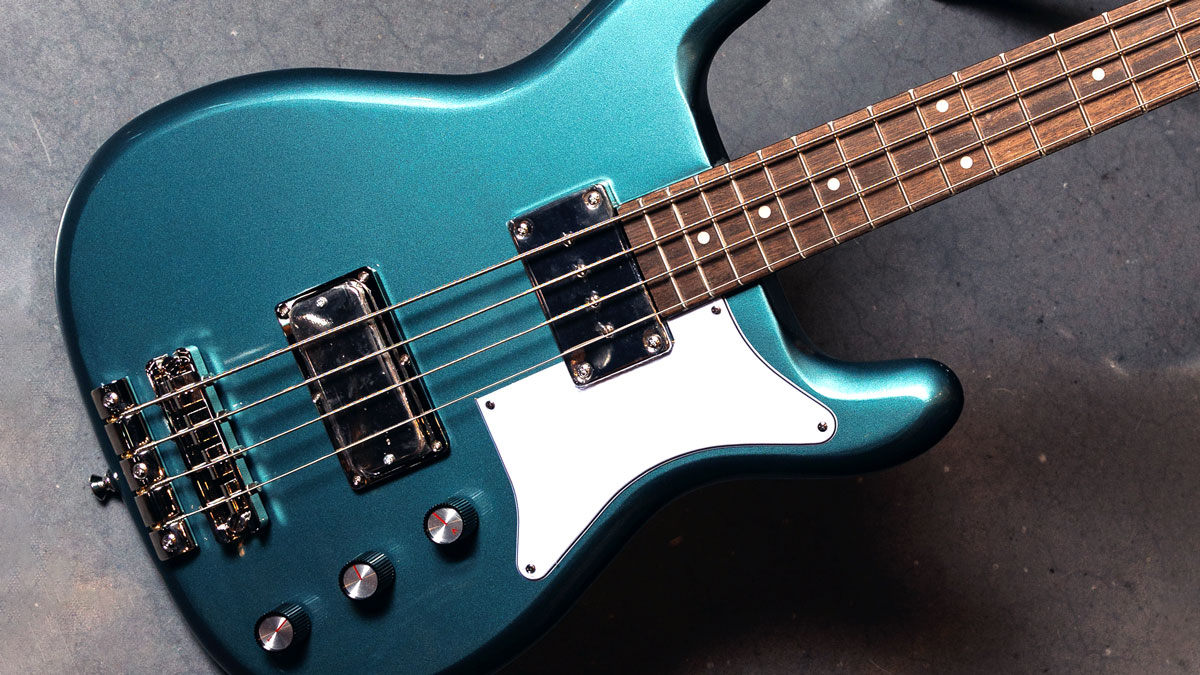Guitar World Verdict
Ideal for beginners, retro fanatics and anyone who fancies an easy-to-play short-scale alternative that won't break the bank.
Pros
- +
Authentic ‘60s looks.
- +
Respectable tones.
- +
Very playable neck.
Cons
- -
None at this price.
You can trust Guitar World
The latest interpretation of Epiphone’s Newport Bass is modelled on the 1960s original… or as close as you can get, short of owning a time machine. What it does serve up is some old-fashioned Epiphone good looks, together with a more modern neck shape and some other player-friendly enhancements thrown in for good measure.
With production outsourced to China, Epiphone has also managed to keep the retail price budget-friendly. Are you craving the look and feel of a vintage-style, short-scale bass guitar, but don’t want to spend a fortune to get it? Let’s see how this one handles.
Build Quality
Featuring a short 30-inch scale length and a body outline something like an Epiphone Wilshire guitar, the Newport Bass is a lightweight, easy-playing instrument with looks that really differentiate it from the norm. Our review model is finished in Pacific Blue and one of four color options.
The mahogany body has something of a Gibson EB-0 feel to it. The neck is mahogany with an Indian laurel fingerboard (the originals were made of rosewood) and traditional dot inlays. In keeping with the bass’s overall size, it’s a slim neck, and there’s lots of room to comfortably navigate all 20 frets.
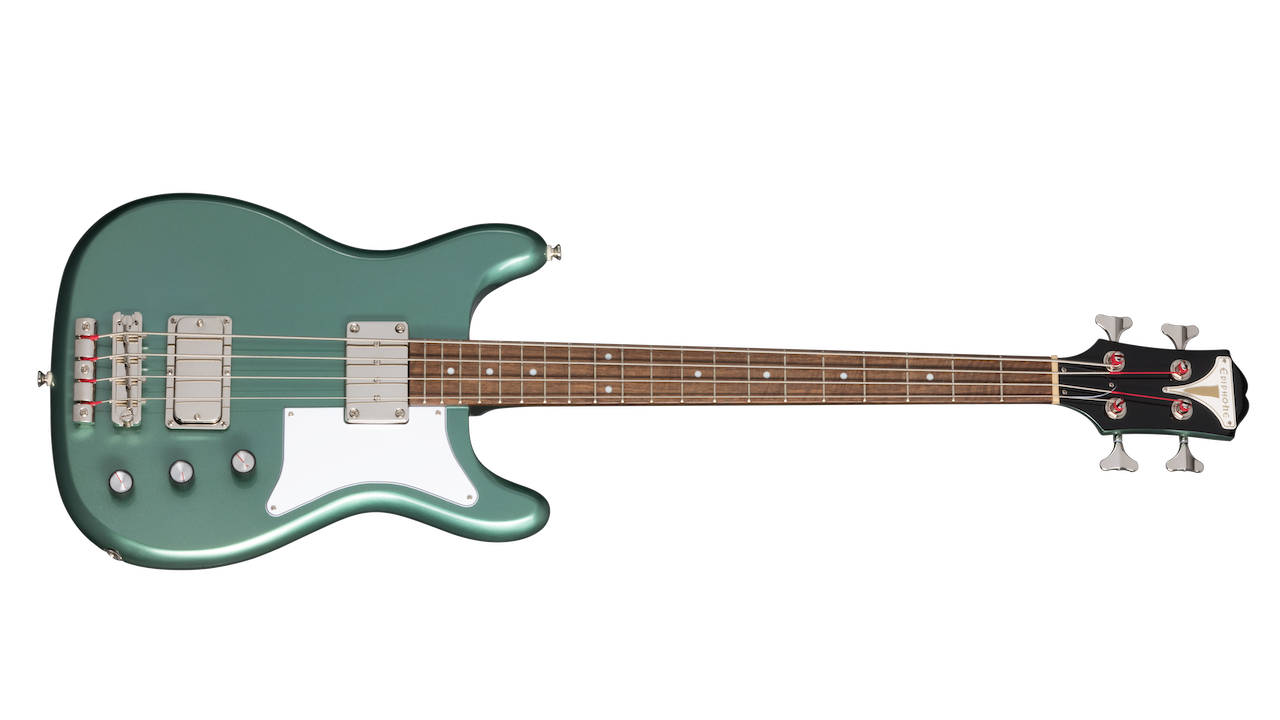
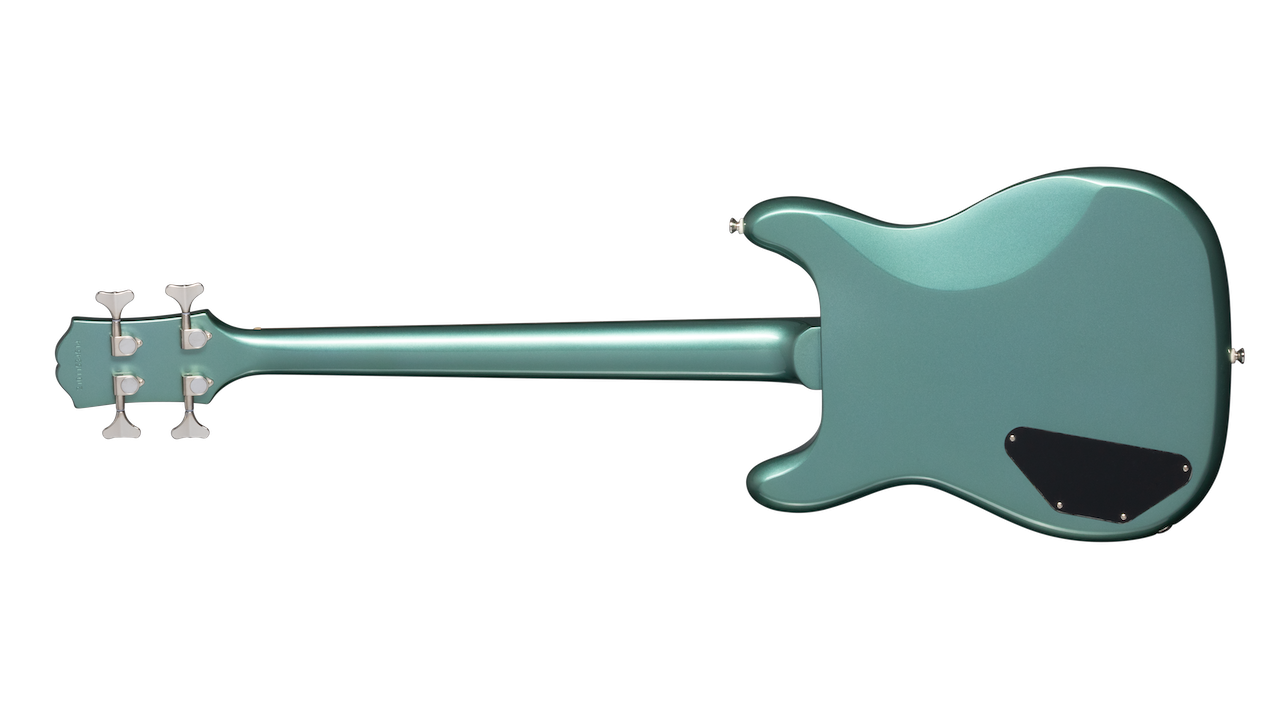
The simple but sturdy bridge unit feels as solid as it looks and provides scope for string adjustment. Epiphone have labelled the bridge as “Historic Bass Tune-O-Matic” with a “Historic Claw” tailpiece
Control-wise, the EB-0-style pickups are Epiphone’s own design and are wired to master volume and tone controls, as well as a blend control.
Sounds and Playability
The Newport Bass isn’t totally committed to exact vintage detailing, although any differences are generally considered to be improvements over the original design. For example, the back of the neck has a more modern C-shape, making it feel more accessible than chunkier vintage necks, while the lower string tension also makes it great fun to play.
All the latest guitar news, interviews, lessons, reviews, deals and more, direct to your inbox!
As with the retro aesthetics, it seems that Epiphone has also aimed for an authentic vintage tone. To this end, the pickups have a relatively low output and deliver a bright and breezy set of bass sounds, with a sweetness to the neck pickup and just enough bite at the bridge.
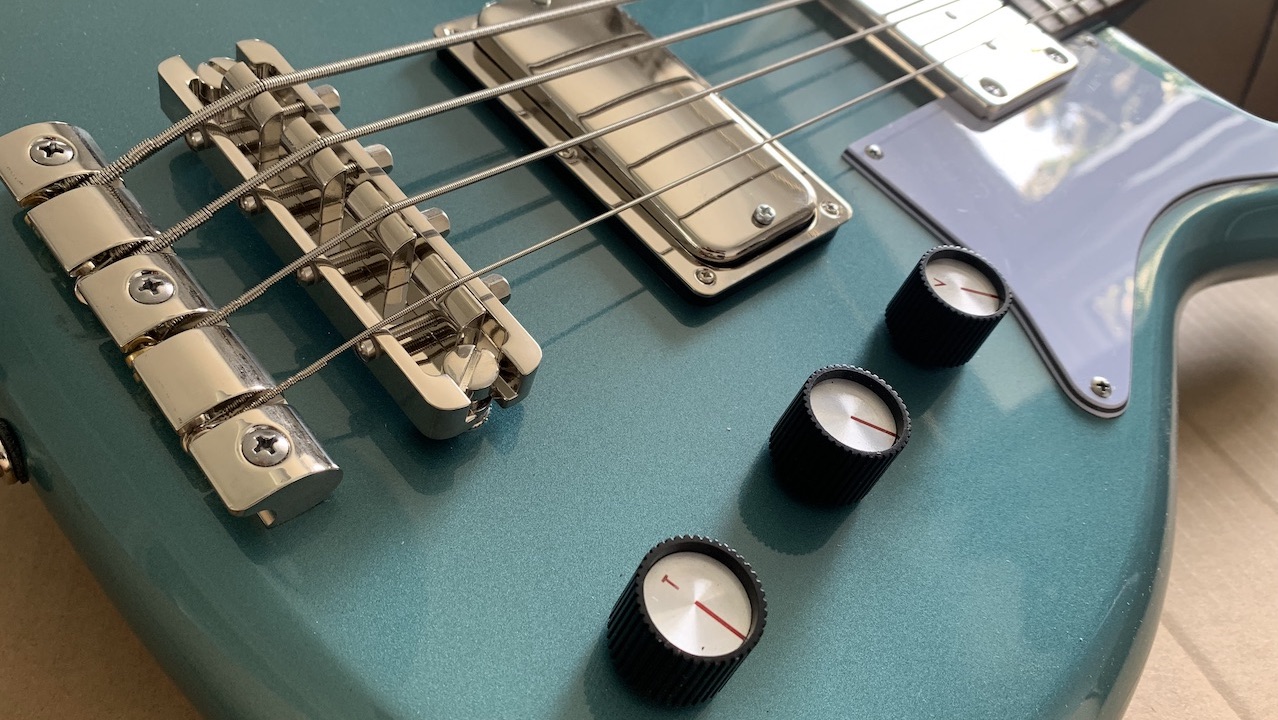
While it may not compete with a US-made Gibson in terms of tonal range, don’t be fooled into thinking this bass can’t cut it in a live environment – the directness of the fundamental tone makes for a very likeable bass that’s capable of a wide range of styles.
You might be left wishing for a little more depth from the pickups, but they nevertheless perform well given the approachable price tag.
Conclusion
The Newport Bass puts a somewhat modern twist on a classic Epiphone blueprint, retaining many of the important design elements of the original while also managing to be more user friendly.
True to its playability, it would be an excellent purchase for beginners and younger players, but its looks will really appeal to a different group altogether – older players, and anyone with a ‘60s fixation. This is a lightweight, easy-playing bass guitar with lots of charm and some beguiling vintage tones.
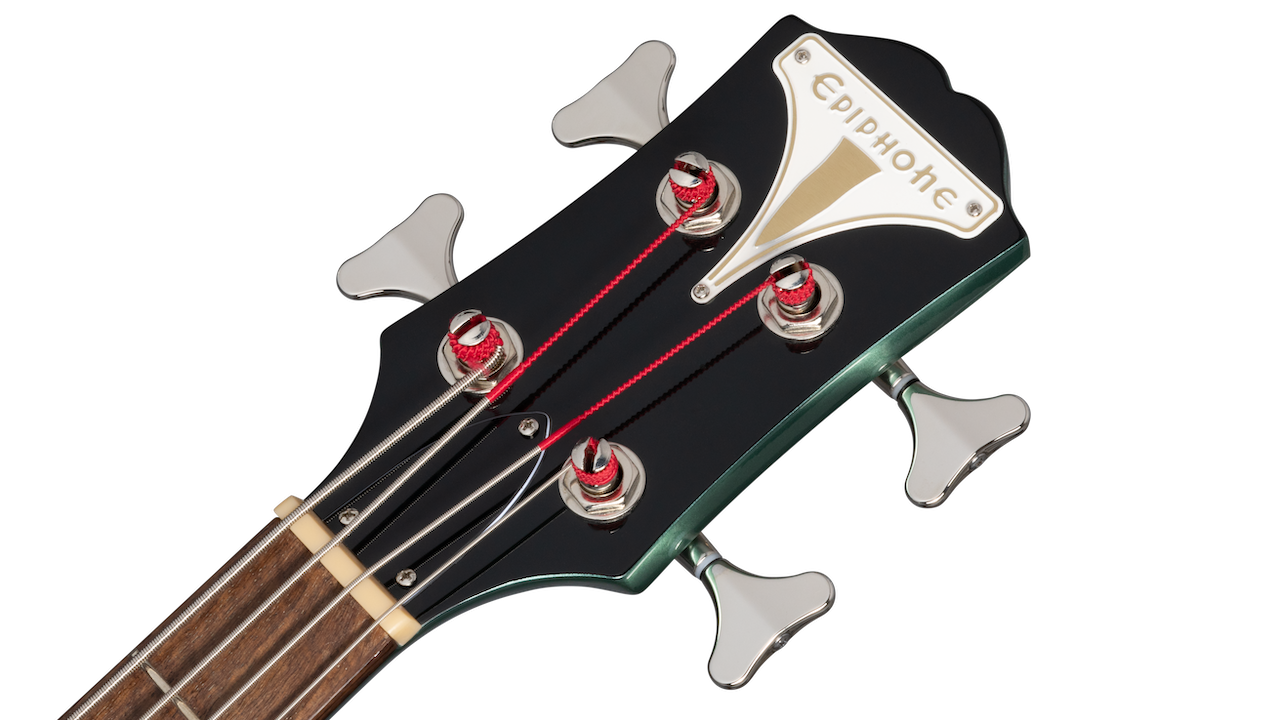
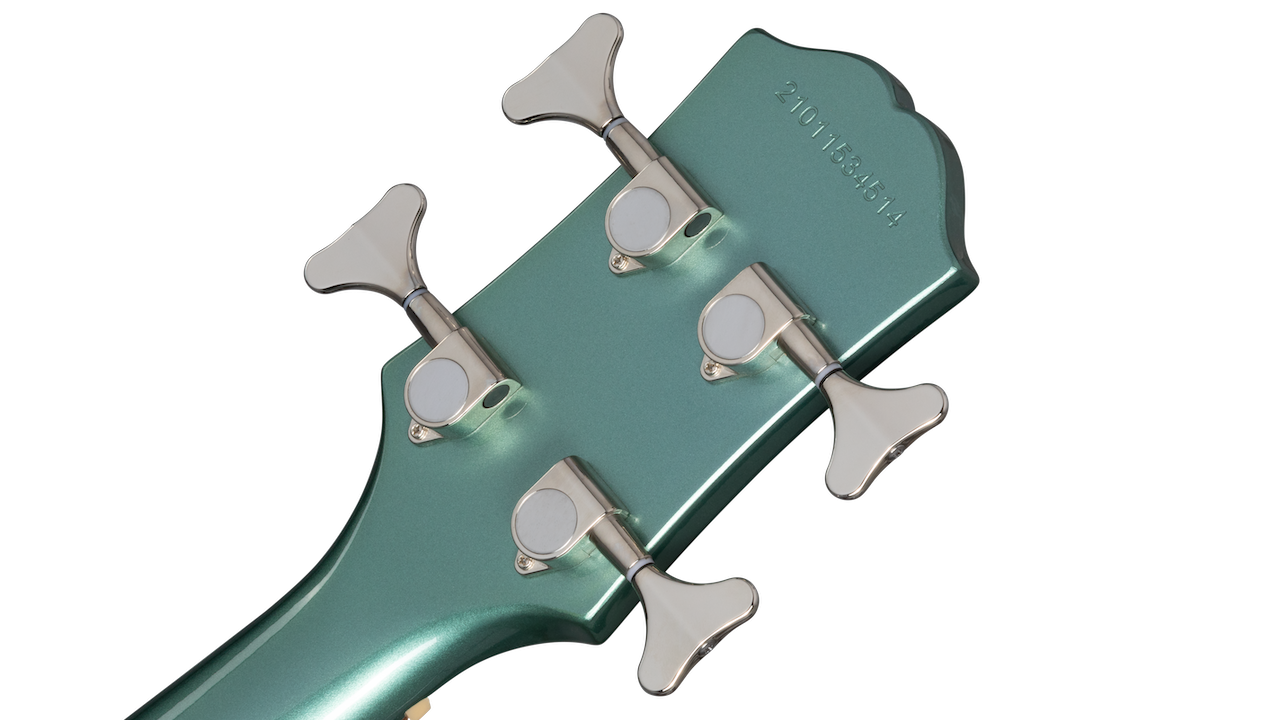
Specs
- PRICE: $399
- MADE IN: China
- BODY: Mahogany
- NECK: Mahogany, 30.5” scale
- NECK JOIN: Set
- NUT WIDTH: 1.63”
- FINGERBOARD: Indian Laurel, 20 frets
- PICKUPS: 1 x TB Pro, 1 x Bass Sidewinder
- CONTROLS: Master Volume, Pickup Blend, Master Tone
- HARDWARE: Die-cast tuners, 'Historic Tune-O-Matic' bridge
- WEIGHT: 9.3 lbs / 4.2 kg
- AVAILABLE FINISHES: Pacific Blue, Cherry, California Coral, Sunset Yellow.
- GIGBAG/CASE INCLUDED? No
- LEFT-HAND AVAILABLE? No
- CONTACT: Epiphone

Nick Wells was the Editor of Bass Guitar magazine from 2009 to 2011, before making strides into the world of Artist Relations with Sheldon Dingwall and Dingwall Guitars. He's also the producer of bass-centric documentaries, Walking the Changes and Beneath the Bassline, as well as Production Manager and Artist Liaison for ScottsBassLessons. In his free time, you'll find him jumping around his bedroom to Kool & The Gang while hammering the life out of his P-Bass.
